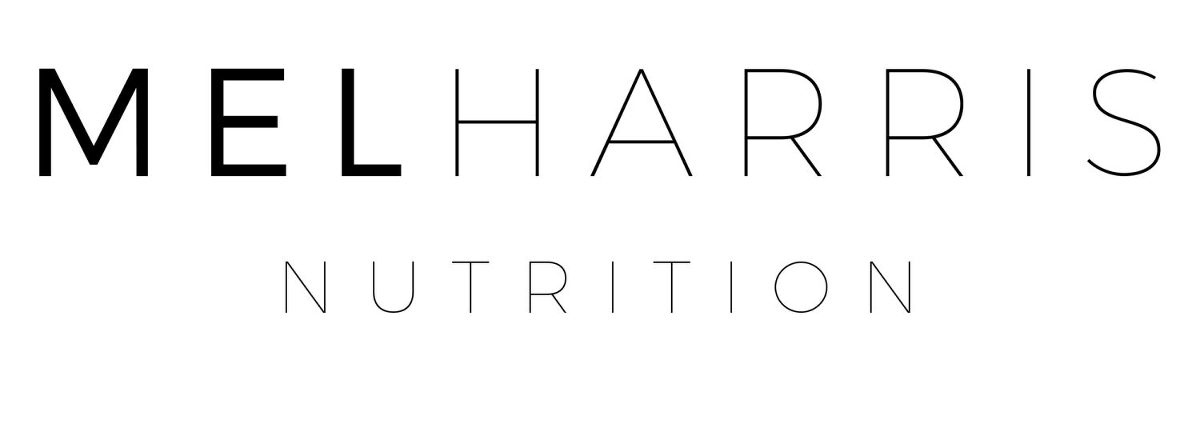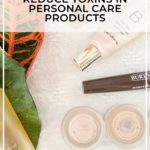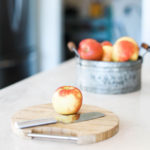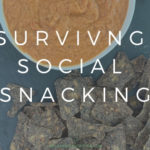What’s in a smell? (Maybe a whole lotta stuff!)
Let’s chat numbers because numbers don’t lie. Most women use 12 personal care and/or cosmetic products every day.
Based on this average, we are exposing ourselves (and our home + family) to roughly 168 different chemicals. In addition, we come into contact with hundreds of other chemicals, from soaps to cleaners, and other household products.
More than 13,000 chemicals are estimated to be used in beauty products. BUT, only about 10 percent have been studied for safety (talk about eye-opening!).
Chemical ingredients are mostly untested and largely unregulated — even with known carcinogens or endocrine-disrupting chemicals (aka bad stuff for your body) — and the ingredients label can be misleading (shocking, right?).
If you’re interested in reducing toxins in your personal care products, I’m sharing all you need to know! Maybe you have some extra time at home this month? Take a few minutes to review the products you use – get rid of expired products, those mini hotel shampoos cluttering your drawers, and the nail polish you bought in college.
Then, take a deeper look at the personal care products you and your family are using…
First up, here are my top 3 steps to reduce toxins in your personal care products:
- Awareness – understand the possible risks and learn more about the products you’re using.
- Use up & replace as you go – don’t toss your make-up bag out the window just yet; instead, look at what you might want to change and make a slow and steady implementation plan.
- Don’t get overwhelmed – thinking about possible toxins lurking in personal care products can easily freak a girl out; take a deep breath, move forward and know that every little bit helps. Most importantly, any effort you make to decrease toxins in any area of your life will reduce your total body burden. And this is always a good thing!
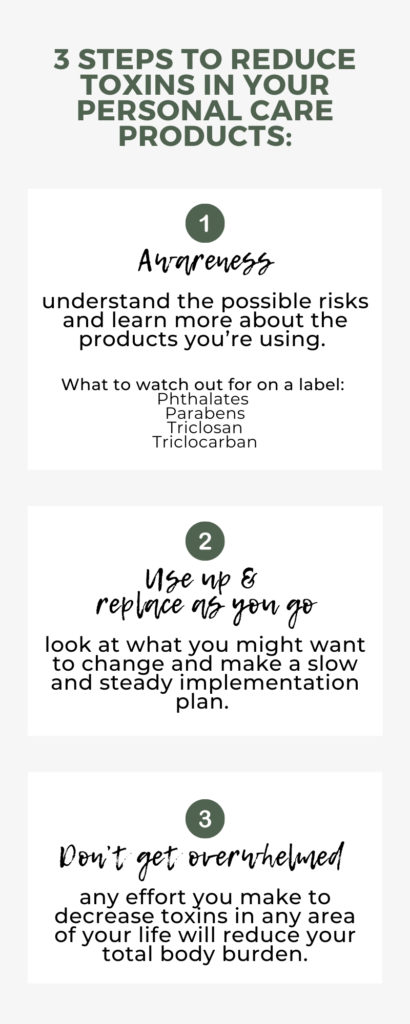
If you’re like me and want to do some of your own research, you can read up on exactly what the FDA does & does NOT regulate when it comes to the cosmetics approved for sale/use in the U.S., click here. Many experts strongly recommend that the regulations surrounding personal products need to be redesigned.
If you’re not like me and doing research sounds like as much fun as a root canal AND you feel like you can trust your girl Mel, then check out this list of my fave personal care products!
How have I made my choices? I like to buy from a company that I know, like + trust.
I also like to be educated about products and how they might impact my health (aka my skin, the air I breathe, and how a product might impact my family when I give my sweet babes + husband kisses goodbye!).
Why reducing toxins in your personal care products matters:
Your skin is your body’s largest organ, and it plays a big role in how your body detoxes each day (like when you sweat out toxins — which also impacts your liver, kidneys, lymphatic system, etc.).
New research shows certain diseases we are seeing an increase in the U.S. may be linked to chemicals in personal-care products (like autism, ADHD, obesity, diabetes, fertility disorders, cancers, and more). Additionally, chemical ingredients in personal care products may have negative (and, again, largely unknown) impacts on the environment, too. When it comes to regulations, “personal care products” are not clearly defined…so, neither are the regulations when it comes to testing or labeling them [Digital Commons].
.jpg)
What’s in a label?
Pull out a few of your favorite products — it might be your daily lotion, kitchen counter disinfectant, or a cosmetic item you can’t live without. Look for some of these words (aka ingredients) and think twice: Is this product the BEST product for you (or someone you love)?
- Phthalates – these plasticizing chemicals make products pliable, and help fragrances stick to skin; they can also disrupt the endocrine system and cause birth defects. Found in synthetic fragrance, nail polish, hairspray and plastic materials.
- Parabens (methyl-, isobutyl-, propyl- and others) – preservatives that prevent the growth of bacteria and mold; they are also endocrine disruptors, which may alter important hormone mechanisms in your body. Found in shampoo, face cleansers, body wash, body lotion and foundation.
- Triclosan and Triclocarban – an antimicrobial pesticide that is toxic to the aquatic environment; may impact the human reproductive system. Found in liquid soap, soap bars and toothpaste.
[Each of these definitions courtesy of the Beauty Counter’s “Never List”]
Also, the word “fragrance” – which is a completely generic term (seemingly innocuous) found on millions of personal care products. We use these products day in and day out: shampoo, deodorant, lotion, laundry detergent, dish soap, and makeup. There’s no requirement for a company to label ingredients that make up a product’s smell, because the “fragrance” is considered a “trade secret.” It could be one, 12, or 1200 chemicals.
Think about it this way — have you ever had a reaction to a product? Maybe your skin broke out in a rash after using a new laundry detergent, or you found yourself sneezing after using a new perfume or face powder or hairspray. Hidden ingredients can trigger dermatitis and respiratory distress — along with more harmful effects, like on your reproductive system, too.
I’m going to throw in one very specific example that you have probably heard more about recently. I’m talking period care.
Non-Toxic Feminine Hygiene Products
Tampons go into one of the most sensitive parts of the female body. Chemicals, pesticides, and bleach used in conventional cotton can be absorbed into the bloodstream [The Health Habit]. If you’ve ever considered a period cup, period panties or even just an organic tampon, start with that. What you use each month is a very personal choice, so pick something that works for you AND that you can feel good about.
By the way, if you make a switch to the period cup, you can feel good about it for Mother Nature, too — because the average woman tosses out more than 10,000 pads or tampons in your lifetime. Each one from every woman ends up in a landfill (or in an ocean) somewhere [The Health Habit].
Next step: Take Ownership & Decrease Your Toxic Burden!
Detoxing harmful chemicals from your personal care products can help lessen your overall toxic burden. You can take ownership of this! Thanks to Google, you can research any and all of your beauty and home products.
I’m not saying “avoid every toxin in the world!” Because you can’t (nor should you create any anxiety or financial burden trying to…). But, you CAN be mindful of what products you use regularly in your personal care/beauty routines. If you can easily find a better, safer alternative — go for it!
More resources (if you’re into the research):
- EWG SKIN DEEP database https://www.ewg.org/skindeep/
- Think Dirty App https://www.thinkdirtyapp.com/
- Good Guide https://www.goodguide.com/#/
- Made Safe https://www.madesafe.org/
References for this article came from:
Roeder, Amy. (2014.) Harmful, untested chemicals rife in personal care products. Harvard School of Public Health. Accessed 2019 from: https://www.hsph.harvard.edu/news/features/harmful-chemicals-in-personal-care-products/
Paulsen, Lisa. (2015.) The Health Risks of Chemicals in Personal Care Products & Their Fate in the Environment. Accessed 2019 from: https://digitalcommons.conncoll.edu/cgi/viewcontent.cgi?article=1016&context=chemhp.
The Beauty Counter. “Just the Facts: Fragrance” and “The Never List.” Accessed 2019 from: www.beautycounter.com.
The Environmental Working Group, ewg.org

